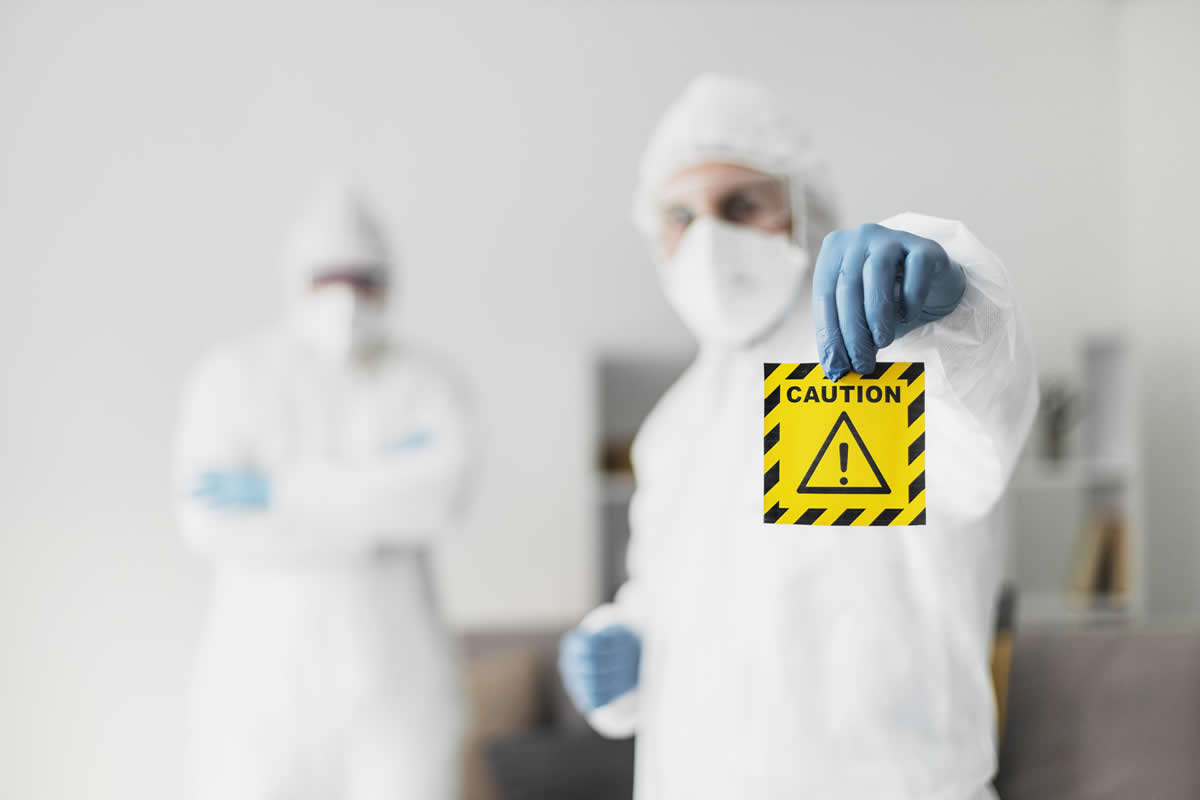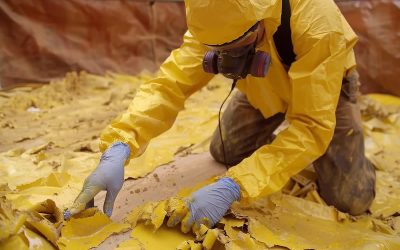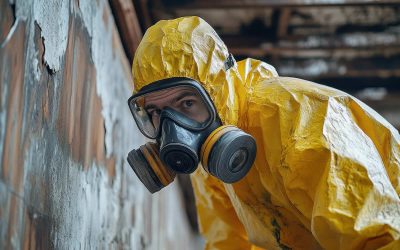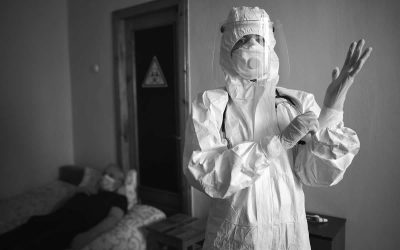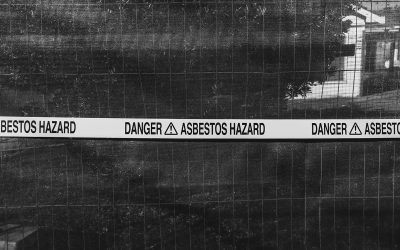If you’ve ever heard about asbestos, chances are you already know it’s dangerous. It’s something you definitely don’t want in your home or workplace. But when exactly did the UK ban asbestos? And why did it take so long for that to happen?
This post breaks it all down for you. We’ll walk through how asbestos came to be used in the first place, when the dangers became clear, and how the ban unfolded step by step. By the end, you’ll know exactly when asbestos was banned in the UK—and why that history still matters today.
What Is Asbestos?
Before we get into the ban itself, it helps to understand what asbestos actually is.
Asbestos is a natural mineral. It’s made up of tiny fibres that are really strong and resistant to heat. For years, people used it in all sorts of building materials—from insulation to ceiling tiles to floor coverings. It seemed like the perfect solution. It was cheap, easy to find, and worked well.
But there was a problem. Once those tiny fibres got into the air and people breathed them in, they could cause serious health problems.
The Dangers of Asbestos
Asbestos isn’t just harmful—it’s deadly.
When you inhale asbestos fibres, they can get stuck in your lungs. Over time, they can cause scarring, inflammation, and disease. The health issues don’t show up straight away, which made it hard to link them to asbestos at first. In fact, symptoms can take decades to appear.
Here are some of the major diseases caused by asbestos:
-
Mesothelioma – a type of cancer that affects the lining of the lungs or abdomen.
-
Asbestosis – a long-term lung disease caused by scarring.
-
Lung cancer – especially in people who smoked.
-
Pleural thickening – where the lining of the lungs becomes thick and swollen.
What makes asbestos so dangerous is that even small amounts can cause long-term damage. And once it’s in your lungs, there’s no way to remove it.
When Did We First Use Asbestos in the UK?
Asbestos has been around for centuries, but it really took off during the Industrial Revolution. Factories, shipyards, and construction sites across the UK started using it in the late 1800s. It was ideal for insulation, especially in hot environments or where fire was a risk.
By the mid-20th century, asbestos was everywhere. You could find it in schools, hospitals, council houses, offices, and even private homes. If your house was built before the 1980s, there’s a good chance it contains some asbestos.
When Did We Realise Asbestos Was Dangerous?
The health risks linked to asbestos weren’t obvious at first. But people started noticing patterns.
By the 1920s, some doctors were beginning to raise concerns. They saw workers who’d been exposed to asbestos develop serious lung problems. By the 1930s, the link between asbestos and lung disease was clearer. Still, it wasn’t until the 1960s and 1970s that public awareness really began to grow.
One of the most important studies came out in 1965. It showed that even family members of asbestos workers—people who had never worked with it directly—were developing mesothelioma. Just from being around contaminated clothes.
That changed everything.
The UK’s Step-by-Step Ban on Asbestos
Now let’s get to the heart of it. When did the UK actually ban asbestos?
The short answer is: not all at once.
The UK banned asbestos in stages. It didn’t happen overnight, and it wasn’t as fast as it probably should’ve been. But over time, the government brought in stricter laws until eventually, all types of asbestos were banned.
1. The First Warning Signs – 1960s and 1970s
During the 1960s, concerns about asbestos grew. More studies came out, and more people began to speak up.
In 1969, the first set of asbestos regulations came into force: the Asbestos Regulations 1969. These rules didn’t ban asbestos, but they tried to limit exposure. Employers had to monitor air quality and provide protective equipment for workers.
It was a start, but not enough.
2. Banning Blue and Brown Asbestos – 1985
The first real ban came in 1985. The UK banned two of the most dangerous types of asbestos:
-
Crocidolite (blue asbestos)
-
Amosite (brown asbestos)
These two types had been shown to be extremely harmful, especially crocidolite, which has very fine fibres that are easy to breathe in.
From 1985, it became illegal to import or sell products that contained blue or brown asbestos in the UK. That was a big step—but it didn’t cover white asbestos.
3. Partial Restrictions on White Asbestos – 1992
White asbestos (chrysotile) was the last to be banned. Before that happened, some restrictions came in during the early 1990s. In 1992, the UK introduced the Asbestos (Prohibitions) Regulations, which limited the use of chrysotile in certain products.
But white asbestos was still legal in many places. It was still being used in things like brake pads and certain building materials.
4. The Full Ban – 1999
Finally, in November 1999, the UK banned all types of asbestos—including white asbestos. This was the moment the full ban came into effect.
The Asbestos (Prohibitions) (Amendment) Regulations 1999 made it illegal to import, supply, or use asbestos in any form. That meant no new buildings could include it, no new products could contain it, and anyone working around existing asbestos had to follow strict safety laws.
So, if you’re wondering when asbestos was completely banned in the UK, the answer is 1999.
Why Did It Take So Long?
One of the questions people often ask is: why did it take so long?
By the 1960s, it was clear asbestos was dangerous. But the full ban didn’t come until nearly 40 years later. That’s a long time, especially when lives were at stake.
There are a few reasons for the delay:
-
Industry pressure – Asbestos was cheap, easy to use, and already in millions of buildings. A ban would have cost companies a lot of money.
-
Uncertainty around white asbestos – For years, some people claimed that white asbestos was “less dangerous.” That argument slowed things down.
-
Lack of public awareness – It took time for the risks to become widely known outside of the medical and industrial world.
But once the evidence became overwhelming, there was no going back.
What About Buildings That Still Contain Asbestos?
Even though asbestos has been banned since 1999, a lot of buildings still contain it. If a building was built or renovated before 2000, there’s a chance asbestos is hidden somewhere—maybe in the roof, ceiling tiles, pipe insulation, or flooring.
The law doesn’t require asbestos to be removed unless it’s damaged or disturbed. In fact, sometimes it’s safer to leave it alone if it’s in good condition and not likely to be touched.
But if asbestos is going to be removed, it needs to be done by professionals. There are strict rules in place to make sure the removal process is safe and doesn’t release harmful fibres into the air.
Who Is Responsible for Managing Asbestos?
If you own or manage a building, you’re legally responsible for checking if asbestos is present and making sure it’s managed properly.
The law that covers this is the Control of Asbestos Regulations 2012. These rules set out how asbestos should be handled in non-domestic buildings.
Here’s what you need to do if you’re responsible:
-
Find out if there’s asbestos in the building.
-
Assess the risk.
-
Make a plan to manage it safely.
-
Keep the plan updated.
-
Tell anyone who might come into contact with it (like contractors or maintenance workers).
Why This Still Matters
Even though asbestos was banned over 20 years ago, the effects are still being felt. Thousands of people in the UK die each year from diseases caused by past exposure.
That’s why asbestos awareness is so important. Just because it’s banned doesn’t mean it’s gone.
Knowing the history helps you understand the risks and take the right steps to protect yourself and others—especially if you work in construction, maintenance, or property management.
Final Thoughts
So, to sum it all up: asbestos was banned in the UK in stages, starting in 1985 and ending in 1999. Even now, many buildings still contain it, and the risks haven’t disappeared.
If you think asbestos might be present in a building you own, manage, or work in—don’t ignore it. Get it checked. Get a proper survey. And if needed, get it removed safely.
Asbestos might be a thing of the past when it comes to new materials, but its legacy still affects the lives of many people today.
Are you looking for Asbestos Disposal in Cheshire? If so, contact us now!
